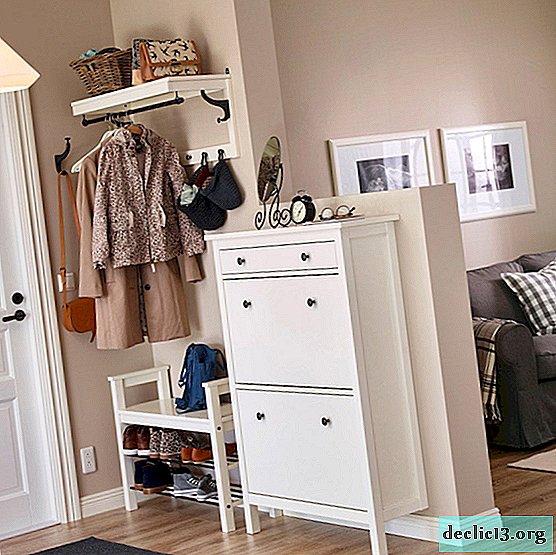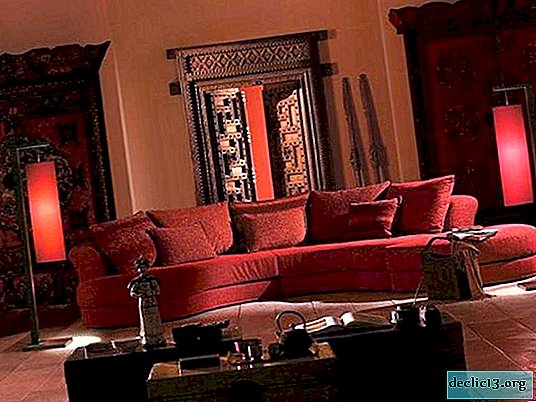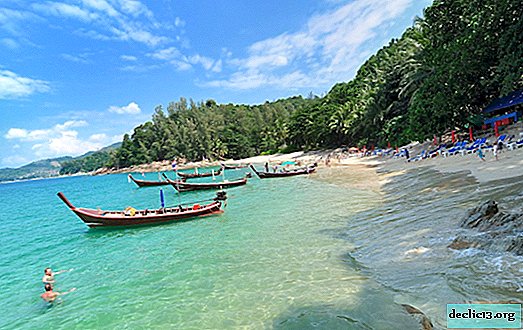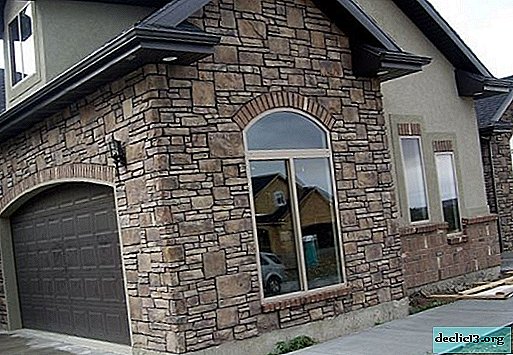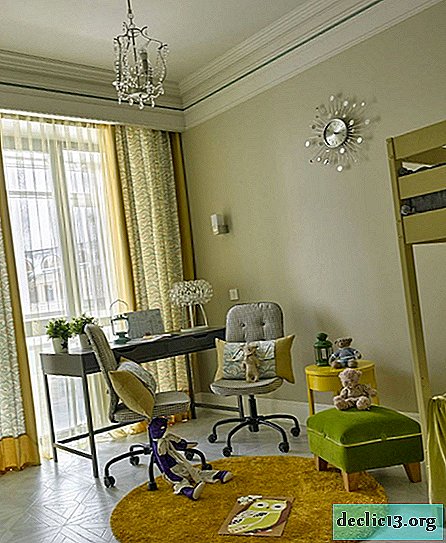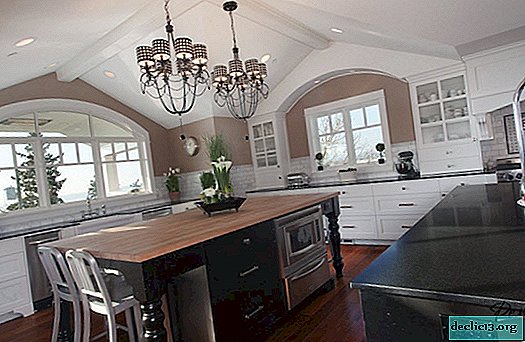Sintra Palace - the residence of the Portuguese monarchs
Sintra National Palace or City Palace is located in the central part of the city. Today, the residence of the kings belongs to the state and is one of the most visited attractions in Portugal. The palace is a UNESCO World Heritage Site.
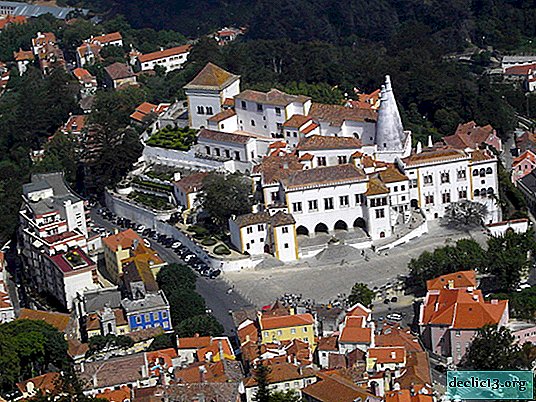
Historical excursion and architecture
The snow-white building in Sintra is easily recognizable by two towers 33 meters high - these cones are kitchen chimneys and hoods. Among all the Sintra palaces, it was the National Castle that was best preserved, since members of the royal family constantly lived in it from the 15th to the 19th century.
The history of the castle begins in the 12th century, when the Portuguese king Afonso I conquered Sintra and made the palace a personal residence.
For two centuries, the residence was not repaired and its appearance did not change.
In the 14th century, King Dinish I decided to expand the territory of the palace - a chapel was added. At the beginning of the 15th century, the monarch Juan I started a large-scale reconstruction of the royal residence in Stntra. During his reign, the main building of the palace was erected, the facade is decorated with exquisite arches and window openings, decorated in a unique Manuelino style.
As a result of the restructuring, the attraction inside and out harmoniously combines many styles. Initially, the Moorish style dominated the design of the Sintra National Palace in Portugal, but over the many centuries of reconstructions and rebuilding there is not much left of it. Most of the surviving and restored parts of the palace belong to the period of the reign of John I, who took an active part and financed construction and restoration work.
 The facade of the building today
The facade of the building todayThe second stage of reconstruction of the castle dates back to the 16th century and the reign of King Manuel I. During this historical period, the Gothic style and the Renaissance were in fashion. According to the idea of the monarch, the manuelino style and the Indian style were added to the design of the palace. It was Manuel I who built the Armorial Hall, decorated with a ceiling made of natural wood, where the coats of arms of the most notable families of Portugal, including the royal, are placed.
After the 16th century, members of the royal family of Portugal appeared infrequently in the palace, but they always changed something in the interior. In 1755, the palace was badly damaged by an earthquake, but quickly restored, the sights returned to their original, luxurious appearance, they brought antique furniture and restored ceramic tiles.
On a note! The most visited and unique palace in Sintra is Pena. Detailed information about him is given on this page.
What can be seen in the palace today?
 Armory ceiling
Armory ceilingEach room of the Sintra National Palace is admired and sincerely interested.
The brightest and most magnificent is the Armorial or Armory Hall, whose windows overlook the ocean. According to one legend, the king of Portugal, being in this room, escorted or met the fleet. The ceiling is famous for the 72 emblems of the most distinguished families of the country.
 Swan room
Swan roomThe swan room is decorated in the style of manuelino. The ceiling of the room is decorated with elegant painting - it depicts swans, which is why the room is so named. The royal ceremony was held here.
On the lower level is the Palace Chapel, which was founded by King Dinis, and designed by King Manuel I.
 Chapel
ChapelThe Forty Hall is decorated with birds, a palace legend is associated with this room. Once the queen found her husband in an awkward situation when he kissed the maid of honor. However, the monarch strongly denied the affair and, so that the gossip of forty no longer violated the family idyll, he ordered the birds to paint the ceiling of the hall. Here they are represented exactly as many women lived in the palace - 136. Each magpie holds in its beak the emblem "for honor" and a rose - a symbol of the monarch of the Portuguese family.
The Moorish Hall is also known as Arabic - this is the royal bedroom. It presents the oldest ceramic tiles in Portugal.
 Kitchen
KitchenThe kitchen is built away from the palace premises to eliminate the risk of fire. Fire for cooking was planted on the floor, and pipes were used as ventilation, through which tourists today find the palace.
Banquets are held and served in the castle today, the main thing is to comply with safety rules. Water is supplied to the palace from the mountain.
You will be interested in: Monteiro Castle is a palace in Sintra with unusual architecture.
How to get there
Suburban trains follow from the capital of Portugal to Sintra; the journey takes only 40 minutes. The trains leave every 10-20 minutes from 5:40 a.m. to 01:00 a.m. The timetable can be found on the official website of the Portuguese Railway www.cp.pt. There are several routes:
- from Rossio Station, located in the center of Lisbon, to Sintra Station;
- from Orient station via Entrecampos station.
You can pay for the train by VIVA Viagem card, in this case a one-way ticket will cost 2.25 euros. It is necessary to attach the card to a special device at the departure station and at the point of arrival.
It is important! If you are staying in the center of Lisbon, it is more convenient for you to return from Sintra by train, which goes to Rossio station.
It is pleasant and exciting to walk from the station, the journey will take no more than a quarter of an hour. If you do not want to go on foot, take the bus - No. 434 or 435. However, keep in mind that in the summer you will have to stand in a long line. A bus stop is located to the right of the station building.
If traveling by car, follow the IC19 if you are coming from Lisbon. From Mafra - IC30 highway. From Cascais - route EN9 via A5.
Compare accommodation prices using this form
Helpful information
- The Royal Palace in Sintra is located at: Largo Rainha Dona Amelia, 2710-616.
- You can visit the castle daily from 9-30 to 19-00, you can buy tickets and enter the territory until 18-30.
- adult (18-64 years old) - 10 EUR
- children (from 6 to 17 years old) - 8.5 EUR
- for pensioners (over 65 years old) - 8.5 EUR.
- family ticket (2 adults and 2 children) - 33 EUR.
Prices on the page are for May 2019.
Note! There are five castles in Sintra.
If you want to examine them all in one day, then there will be enough time, only for a walk around the palace. If you want to inspect the interiors, one day is only enough for three castles. On average, it takes 1.5 hours to visit one palace.
Sintra National Palace is located in the central part of the city near the town hall. Of all the five palaces that Sintra is, the royal residence is the oldest. It is very easy to recognize the castle - two huge chimneys are installed on its roof. Despite the fact that the interior decoration of the halls is not as magnificent and luxurious as in other European palaces, many tourists come to Sintra to enjoy the incredible atmosphere and travel to the past.

